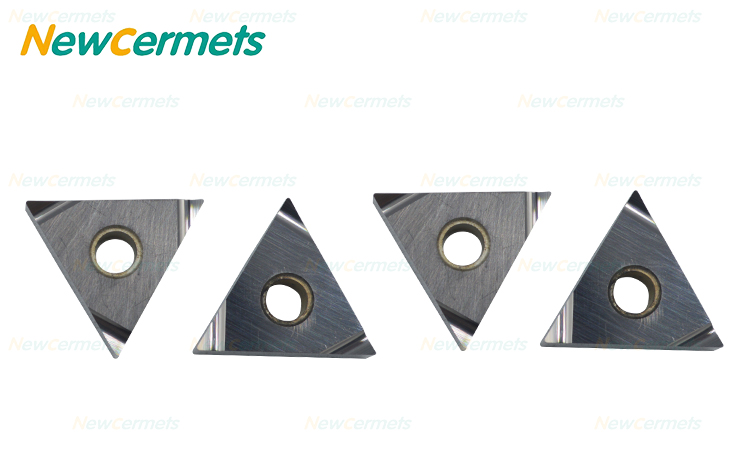Cermet blade is a composite material of ceramic and metal made by powder metallurgy method, which not only has the toughness, high thermal conductivity and good thermal stability of metal, but also has the characteristics of high temperature resistance, corrosion resistance and wear resistance of ceramic. Cermet inserts can adapt to cutting from low speed to high speed, with long service life and low price. The disadvantages are insufficient toughness and poor thermal conductivity. Cermet tools can be divided into oxide-based and carbide-based, and are widely used in missile nozzle bushings, manufacturing cutting tools and other fields. Let's learn about cermet knives!

What is a cermet blade
Cermet is also known as titanium-based cemented carbide, and some people also call it "ceramic gold", "ceramic gold", etc. It has excellent mechanical properties and high temperature performance. As its name implies, it has both ceramics (Ceramics). ) The high hardness of the material, but also the strength and toughness of the metal material, and the price is relatively low. However, for a long time, the application of cermets as cutting tool materials is far less extensive than that of other similar cemented carbides. In recent years, the development and application of cermet tool materials have gradually been paid attention to, and their application scope has also been continuously expanded.
What are the advantages of cermet blades
1. It can adapt to cutting from low speed to high speed.
2. Long service life.
3. The machined surface quality is high.
4, the price is relatively low.
5. It can replace the scarce tungsten resources.
Disadvantages of cermet blades
1. Insufficient toughness and poor mechanical impact resistance. Therefore, cermet inserts are not suitable for interrupted cutting, hard material cutting and cutting of workpieces with black skin chill layer.
2. Poor thermal conductivity. Therefore, cermet inserts have poor thermal stress change ability and are prone to thermal cracks, so they are not suitable for wet cutting and hard material cutting.
Types and applications of cermet cutters
1. Oxide-based cermet
It is based on alumina, zirconia, magnesia, beryllium oxide, etc., and is compounded with metal tungsten, chromium or cobalt. It has the characteristics of high temperature resistance, chemical corrosion resistance, good thermal conductivity and high mechanical strength, and can be used as missile nozzles Liners, crucibles for melting metal and metal cutting tools.
2. Carbide-based cermet
With titanium carbide, silicon carbide, tungsten carbide, etc. as the matrix, it is compounded with metals such as cobalt, nickel, chromium, tungsten, molybdenum, etc. It has the characteristics of high hardness, high wear resistance, high temperature resistance, etc. It is used to manufacture cutting tools, High temperature bearings, sealing rings, wire pick-up die sets and turbine blades.
3. Nitride-based cermet
With titanium nitride, boron nitride, silicon nitride and tantalum nitride as the matrix, it has superhardness, thermal vibration resistance and good high temperature creep, and is less used.
4. Boride-based cermet
It is composed of titanium boride, tantalum boride, vanadium boride, chromium boride, zirconium boride, tungsten boride, molybdenum boride, niobium boride, hafnium boride, etc., and is compounded with some metal materials.
5. Silicide-based cermet
Manganese silicide, iron silicide, cobalt silicide, nickel silicide, titanium silicide, zirconium silicide, niobium silicide, vanadium silicide, niobium silicide, tantalum silicide, molybdenum silicide, tungsten silicide, barium silicide, etc. made.